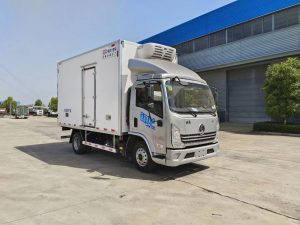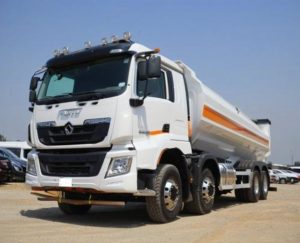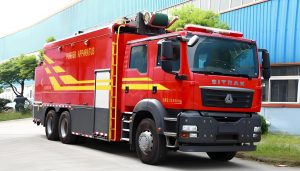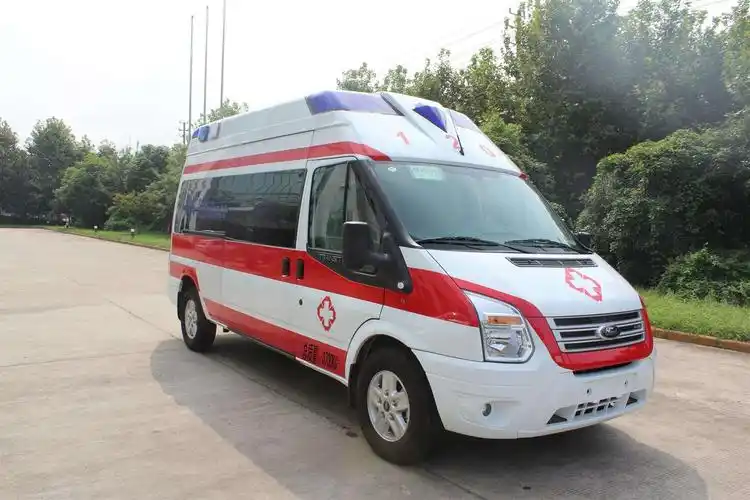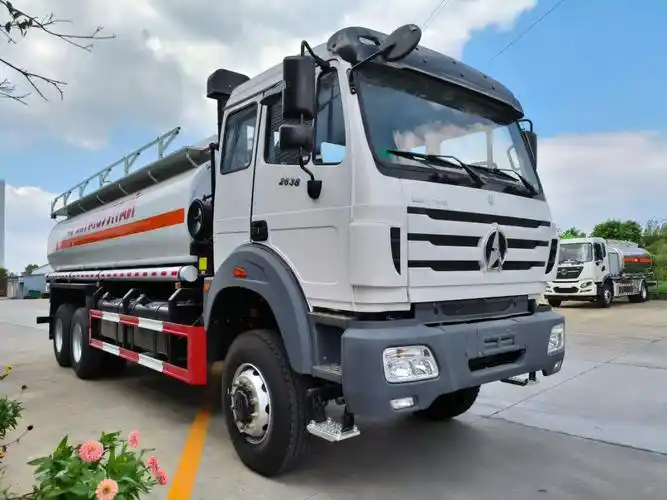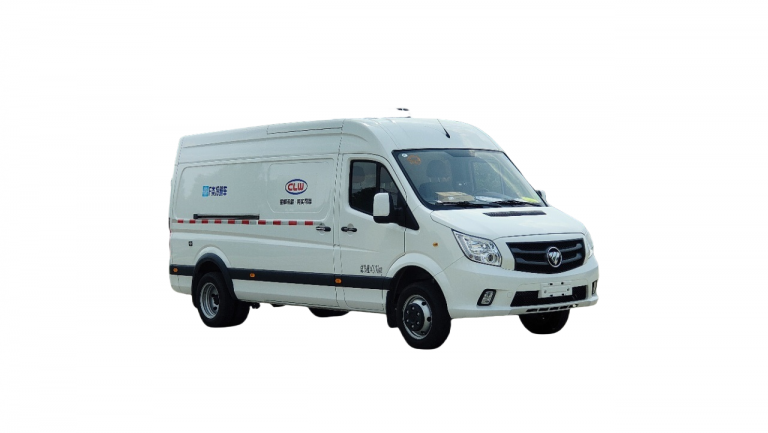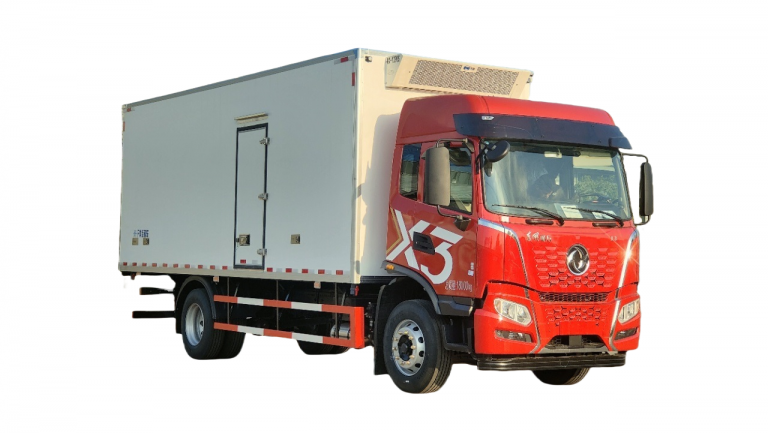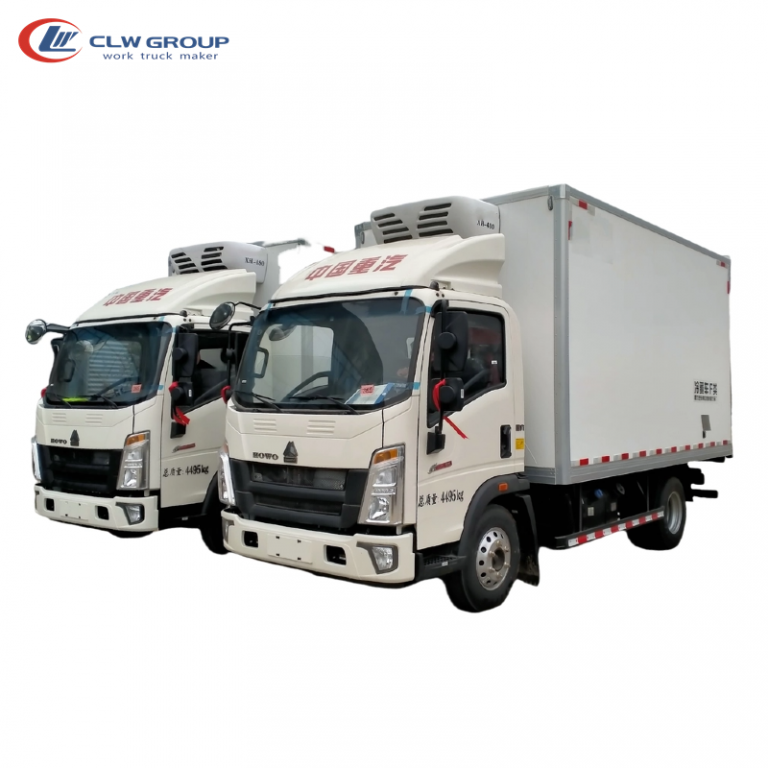Table of Contents
Toggle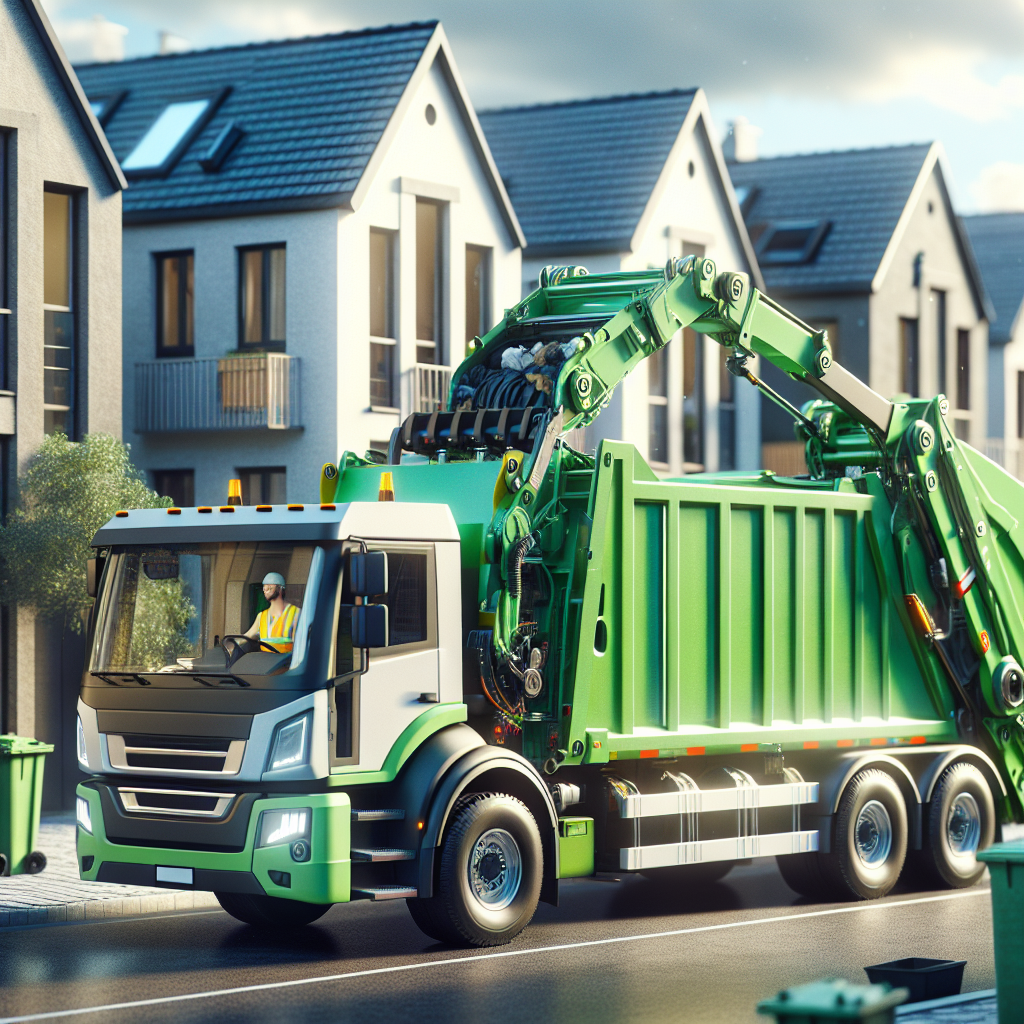
Garbage trucks play a crucial role in maintaining clean and healthy communities. These specialized vehicles are designed to collect and transport waste efficiently, ensuring that our streets and neighborhoods remain free from litter and debris. Choosing the right garbage truck is essential for waste management companies and municipalities to optimize their waste collection operations.
When selecting garbage trucks, several factors come into play. The type of waste being collected, the size of the service area, and the specific needs of the community all have an impact on the decision-making process. This article will explore the different types of garbage trucks available, key considerations to keep in mind, how to assess waste collection needs, important truck features to evaluate, and cost factors to consider. By the end, readers will have a better understanding of how to choose the most suitable garbage truck for their requirements.
Types of Garbage Trucks
Garbage trucks come in various designs, each tailored to specific waste collection needs. The four main types are front loaders, rear loaders, side loaders, and roll-off trucks. Each type has its unique features and applications in waste management.
Front Loaders
Front loader garbage trucks are designed to handle large volumes of waste, making them ideal for commercial and industrial waste collection. These trucks have hydraulically controlled forks at the front that lift and empty large containers, often called dumpsters, into the truck’s hopper.
Key features of front loaders include:
- Lifting capacity of approximately 8,000 pounds
- Ability to haul up to 40 cubic yards of garbage when fully loaded
- Efficient operation with a single operator
- Suitability for tight areas and narrow streets
- Hydraulic packer to compact waste in the hopper
While front loaders have a higher initial cost, they offer a great return on investment due to their efficiency and single-operator design.
Rear Loaders
Rear loader garbage trucks are versatile vehicles used for both residential and commercial waste collection. As the name suggests, these trucks have a loading mechanism at the rear.
Characteristics of rear loaders:
- More affordable than front loaders
- Require a driver and an additional operator to handle waste containers
- Can service up to 800-850 homes in a single day
- Available with manual loading or automated lifting mechanisms
- Hydraulically powered compaction system
Rear loaders are a popular choice for waste hauling companies due to their affordability and versatility.
Side Loaders
Side loader garbage trucks are primarily used in residential areas for efficient waste collection. These trucks feature a mechanical arm on the side that collects and empties garbage bins into the hopper.
Notable aspects of side loaders:
- Can be operated by a single person
- Available in manual and automated versions
- Automated versions can service up to 1,500 homes per day
- Typical capacity of 28 cubic yards of garbage
- Can hold approximately 30,000 pounds of compacted waste
Side loaders offer efficient residential waste collection with reduced labor requirements.
Roll-Off Trucks
Roll-off trucks, also known as dumpster trucks, are the most commonly used garbage trucks in the United States. They are designed to transport large, open-top waste containers to and from collection and drop-off points.
Key features of roll-off trucks:
- Use wheels to load and unload containers
- Suitable for transporting industrial and commercial waste
- Can carry up to 10 tons of refuse at one time
- Not suitable for door-to-door residential waste collection
- Use either a hydraulic arm or cable winch system to load containers
Roll-off trucks are popular for their large capacity and suitability for transporting heavy loads to landfills or recycling facilities.
Key Factors to Consider
Capacity and Size
When selecting garbage trucks, capacity and size are crucial factors to consider. The body of a garbage truck serves as the storage area for processed waste. Depending on the specific requirements, the capacity can range from 6 to 26 cubic meters. For instance, some trucks have a garbage tank volume of 4,000 liters, which is suitable for collecting household waste and domestic garbage. The size of the vehicle also plays a role in its maneuverability and ability to navigate through various urban environments.
Compaction Mechanism
The compaction mechanism is a key feature that sets garbage trucks apart from regular vehicles. This system allows for efficient waste collection by compressing trash into a more manageable size. The compaction plate, typically made of high-strength steel, moves on an inclined surface to compact collected waste in the hopper into the body. The compaction ratio cycle involves the plate moving backward, then downward to compress the waste. Some trucks have a compression ratio of 1:0.8 and can exert a compression pressure of up to 16 MPa. This process significantly increases the density of the waste and reduces its volume, thereby improving the efficiency of garbage collection and transportation.
Fuel Efficiency
Fuel efficiency has an impact on the operational costs and environmental footprint of garbage trucks. Traditional garbage trucks generally have poor fuel economy, typically achieving between 2 and 3 miles per gallon. However, advancements in technology have led to the development of more fuel-efficient options. Compressed Natural Gas (CNG) trucks, for example, have shown promising results. Fleets using CNG vehicles have reported fuel economy close to that of comparable diesel vehicles, with the added benefit of potential fuel cost savings of around 50%. Electric garbage trucks are also emerging as an alternative, with some cities reporting significant fuel savings. For instance, Chicago deployed an electric garbage truck that was projected to save 2,688 gallons of fuel annually.
Maneuverability
The ability of a garbage truck to navigate through various urban environments is crucial for efficient waste collection. Factors such as wheelbase, turning radius, and overall dimensions affect a truck’s maneuverability. For example, some garbage trucks have a wheelbase of 2800/3300 mm, which can influence their ability to navigate tight spaces. The loading mechanism also plays a role in maneuverability. Rear-loader trucks, for instance, are designed with a loading mechanism at the back, which can be advantageous in certain collection scenarios. Additionally, features like container holding arms, which are used for automatic waste loading, can impact the truck’s operational flexibility in different collection environments.
Assessing Your Waste Collection Needs
To choose the most suitable garbage trucks, it is essential to assess waste collection needs accurately. This assessment involves considering various factors such as the type of waste being collected, the volume of waste generated, and the frequency of collection required.
Residential vs. Commercial
The type of waste collection service significantly influences the choice of garbage trucks. Residential waste collection typically involves servicing individual households, while commercial waste collection caters to businesses and industrial areas.
Residential waste collection often utilizes automated “one arm bandit” trucks in urban environments. These vehicles are equipped with a mechanical arm operated by a joystick from the driver’s seat, allowing for efficient collection without the need for the driver to exit the vehicle. However, these trucks may not be suitable for rural areas due to their sensitivity to dirt, mud, and dust.
Commercial waste collection, on the other hand, may require larger capacity trucks capable of handling heavier loads and more diverse types of waste. These trucks are often designed to accommodate dumpsters and other large containers commonly used by businesses.
Waste Volume
The volume of waste generated in a service area has an impact on the selection of garbage trucks. Urban areas with high population density typically produce larger volumes of waste compared to rural areas. The world’s urban population is growing by approximately 60 million people per year, leading to a significant increase in household waste production.
To accommodate varying waste volumes, garbage trucks come in different sizes and capacities. Some trucks have a garbage tank volume of 4,000 liters, suitable for collecting household waste and domestic garbage. Others can have capacities ranging from 6 to 26 cubic meters, depending on the specific requirements of the collection area.
Collection Frequency
The frequency of waste collection has an impact on the choice of garbage trucks and the overall efficiency of the waste management system. While twice-per-week collection is common in many areas, studies have shown that the second collection day is often underutilized.
Reducing collection frequency can lead to several benefits:
- Lower operating costs through improved operational productivity
- Reduced need for collection vehicles by 20 to 40 percent
- Increased participation in recycling and yard-trimmings diversion programs
- More even distribution of waste collection workload throughout the week
Factors influencing collection frequency include:
- Availability of recycling and composting programs
- Implementation of “Pay-As-You-Throw” fee structures
- Seasonal variations in waste generation
- Local regulations and community expectations
By carefully assessing these factors, waste management companies and municipalities can determine the optimal collection frequency and select garbage trucks that best meet their needs.
Evaluating Truck Features
When selecting garbage trucks, it is crucial to evaluate various features that enhance efficiency, safety, and ergonomics. These features can significantly impact the overall performance and effectiveness of waste collection operations.
Automated vs. Manual Loading
Garbage trucks come in two primary loading configurations: automated and manual. Each has its advantages and is suited to different collection scenarios.
Automated loading systems utilize a robotic arm controlled by the driver from inside the cab. This system allows for efficient collection without the need for the driver to leave the vehicle. Key features of automated loading include:
- Joystick-controlled mechanical arm for grabbing and emptying roll-out carts
- Ability to dump and return containers from any position without retracting the lift arm
- Zero-radius arm design for improved maneuverability around parked cars
- Vertical container travel to minimize spillage
Manual loading systems, on the other hand, require a two-person crew – one driving and one collecting. These systems offer flexibility in certain collection scenarios and typically feature:
- Side-loading trucks with 22-cubic-meter bodies
- Task alternation between crew members to distribute labor evenly
- Adaptability to various container types and collection environments
Safety Features
Modern garbage trucks incorporate numerous safety features to protect drivers, collectors, and the public. Some key safety elements include:
- All-steel doors and cabs with enhanced visibility
- 360-degree camera systems for improved situational awareness
- Blind-spot detectors and forward collision warning systems
- Advanced emergency braking systems
- Onboard diagnostics for quick identification of potential issues
Safety protocols and equipment are also essential:
- Pre-route truck checks to ensure DOT compliance
- Personal Protective Equipment (PPE) as recommended by SWANA, including reflective vests, gloves, and protective headwear
- Clear line of sight between driver and guide when outside the vehicle
- Strict adherence to safety rules, such as not riding on steps when the truck is moving faster than 10 mph or backing up
Ergonomics
Ergonomic features in garbage trucks are designed to reduce physical strain on operators and improve overall efficiency. Key ergonomic considerations include:
- Easy-to-use, in-cab controls designed with driver comfort in mind
- Ergonomically positioned joysticks for automated arm operation
- Easily accessible control systems and components for simplified maintenance and repair
- Comfortable seating and cab design to reduce driver fatigue during long routes
Additionally, routing optimization plays a crucial role in ergonomics by:
- Maximizing the number of stops a driver can make efficiently
- Reducing the number of turns and instances of backing up
- Minimizing unnecessary miles driven, thereby reducing driver exposure to risk
By carefully evaluating these features, waste management companies and municipalities can select garbage trucks that offer the best combination of efficiency, safety, and ergonomics for their specific collection needs.
Understanding Truck Specifications
When selecting garbage trucks, it is crucial to understand the various specifications that determine their performance and suitability for specific waste collection needs. These specifications include payload capacity, body size, and chassis type.
Payload Capacity
Payload capacity refers to the amount of waste a garbage truck can carry. This specification has an impact on the efficiency of waste collection operations. For instance, the Heil Half/Pack, a popular front loader in the United States, offers hauling capacities of up to 40 yards. This large capacity allows for carrying more trash in fewer trips, increasing overall efficiency.
Similarly, Wittke/Starlight front loading garbage trucks also feature a 40-yard capacity, enabling them to transport more waste with every trip to the landfill. The McNeilus Meridian front loader has a 14-ton carrying capacity, showcasing the range of payload capacities available in different models.
Body Size
The body size of a garbage truck determines its overall dimensions and has an impact on its maneuverability and storage capacity. For example, Wittke/Starlight front loading garbage trucks have a 299-inch overall length and a 102-inch overall width. These dimensions allow for greater maneuverability on narrow streets while still maintaining a substantial waste capacity.
The McNeilus Contender front loader features a 12 cubic yard hopper, demonstrating how body size can vary among different models. When considering body size, it’s important to balance the need for capacity with the ability to navigate the intended service area effectively.
Chassis Type
The chassis type forms the foundation of a garbage truck and has an impact on its performance, weight distribution, and overall functionality. Different chassis types are designed to meet various operational requirements.
- Special truck chassis: Some models, like the CQ5256XYKAMDG603, are built on a special truck chassis designed specifically for waste collection purposes.
- Drive configurations: Chassis types can vary in their drive configurations. For instance, the CQ5256XYKAMDG603 has a 6×2 drive mode, which affects its traction and maneuverability.
- Wheelbase: The wheelbase of a garbage truck chassis has an impact on its turning radius and weight distribution. For example, the CQ5256XYKAMDG603 has a wheelbase of 5400+1395mm.
- Weight ratings: Chassis specifications include important weight ratings such as:
- Chassis Tare Weight: 10.1 tons for the CQ5256XYKAMDG603
- Recommended Loading: 15 tons
- Gross Vehicle Weight: 25 tons
These specifications help determine the truck’s capacity and compliance with road regulations.
Understanding these key specifications enables waste management companies and municipalities to choose garbage trucks that best suit their operational needs, ensuring efficient and effective waste collection services.
Cost Considerations
When selecting garbage trucks, it is crucial to consider various cost factors that have an impact on the overall investment and operational expenses. These considerations can be categorized into three main areas: initial purchase price, operational costs, and maintenance expenses.
Initial Purchase Price
The initial cost of purchasing a garbage truck represents a significant component of its overall operating cost. The price of a garbage truck can vary widely, ranging from tens of thousands to hundreds of thousands of dollars, depending on the size and specifications of the vehicle. This substantial upfront investment requires careful consideration, as it has an impact on the long-term financial planning of waste management companies and municipalities.
Operational Costs
The day-to-day operation of garbage trucks involves several ongoing expenses that contribute to the total cost of ownership. These operational costs include:
- Fuel: Garbage trucks typically run on diesel engines, which consume a significant amount of fuel due to their size and weight. The frequent stops and starts during collection routes further increase fuel consumption, making it a substantial expense in the operation of these vehicles.
- Labor: The cost of employing drivers and collection crews has an impact on the overall operational expenses. Labor costs include wages, benefits, and training for personnel involved in waste collection activities.
- Disposal fees: Depending on the location, disposal costs can range from $20 per ton to more than $100 per ton. These fees have an impact on the overall cost of waste management operations.
- Indirect costs: Administrative tasks such as supervision, billing, and accounting also contribute to the operational expenses. A good estimate is to add 15 percent of the direct costs to account for these indirect expenses.
When all these costs are combined, they typically amount to approximately $13,000 a month, or $650 per day, to operate one truck. To ensure profitability, waste management companies often add another 15 percent to the price charged to customers.
Maintenance Expenses
Regular maintenance has an impact on the longevity and efficiency of garbage trucks. Maintenance expenses include:
- Routine maintenance: This involves tasks such as oil changes, tire replacements, and brake inspections. These regular checks are essential to ensure the safety and efficiency of the garbage trucks.
- Hydraulic system maintenance: Hydraulics is one of the three biggest expenses in garbage truck operation, along with fuel and tires. Regular maintenance of hydraulic components, including filters, hose assemblies, and cylinders, has an impact on the overall cost.
- Preventive maintenance: Implementing a maintenance schedule has an impact on reducing unscheduled downtime and associated costs. Daily inspections should include checking hydraulics, rollers, sensors, nuts and bolts, cables, and structural components.
- Repairs: Despite regular maintenance, garbage trucks may require repairs for mechanical or electrical components, further adding to the operating cost.
By implementing proper maintenance practices, waste management companies can prevent major breakdowns and reduce the risk of costly repairs. While routine maintenance comes with a cost, it is far less than the expense of a vehicle that won’t run or requires major repairs.
Choosing the Right Manufacturer
Selecting the appropriate garbage truck manufacturer has an impact on the long-term reliability and efficiency of a waste management fleet. With numerous options available, it’s crucial to consider factors such as reputation, after-sales support, and warranty offerings when making this important decision.
Reputation
The reputation of a garbage truck manufacturer has an impact on the quality and durability of their products. Established companies with a long history in the industry often have a proven track record of producing reliable vehicles. For instance, Heil, founded in Milwaukee, Wisconsin, has been in operation for over a century and has built a strong reputation for quality and durability in the waste industry.
Another reputable manufacturer, McNeilus, is part of the Oshkosh Corporation and has a reputation for innovative engineering. They offer a variety of options to ensure customers find the perfect fit for their needs. McNeilus proudly claims that their designs require less maintenance than competitors, potentially saving time and money over the years.
New Way, a family-owned company with 49 years of experience, has made a name for itself through a strong commitment to innovation, quality, and customer service. These established manufacturers have earned their reputations through years of consistent performance and customer satisfaction.
After-Sales Support
The level of after-sales support has an impact on the ongoing operation and maintenance of garbage trucks. A strong network of dealers and exceptional customer service can make a significant difference in keeping vehicles on the road and minimizing downtime.
McNeilus, for example, has received positive feedback from fleet managers and supervisors regarding their customer support. This level of service can be crucial when dealing with unexpected issues or routine maintenance needs.
Heil provides its customers with a strong network of dealers and prides itself on exceptional customer service. This support network can be invaluable for addressing concerns and ensuring the longevity of the vehicles.
Some manufacturers, like Amrep, offer additional benefits such as cooperative purchasing contracts, which can simplify the buying process for local governments. This type of support extends beyond just the product itself and has an impact on the overall customer experience.
Warranty
Warranty offerings have an impact on the long-term costs and peace of mind for garbage truck operators. Different manufacturers provide varying levels of warranty coverage, which should be carefully considered when making a purchase decision.
For instance, some companies offer extended warranties on their vehicles. These warranties can cover various components of the truck, including the body, chassis, and transmission. The length and comprehensiveness of these warranties can vary significantly between manufacturers.
Amrep, for example, uses genuine Hardox wear plate steel in the entire body shell of their trucks. This choice of material extends the trucks’ usable life and can save customers money on replacement parts. While not a warranty in the traditional sense, this design choice demonstrates a commitment to long-term durability that can be as valuable as a formal warranty.
When evaluating warranties, it’s important to consider not just the length of coverage, but also what specific components are included and any conditions or limitations that may apply. A comprehensive warranty can provide significant value over the life of the vehicle and should be a key factor in the decision-making process.
Conclusion
Selecting the right garbage truck has a significant influence on the efficiency and effectiveness of waste management operations. From considering the various types of trucks to evaluating key features and understanding cost implications, there’s a lot to think about when making this important decision. By carefully assessing waste collection needs, analyzing truck specifications, and weighing the reputation of manufacturers, waste management companies and municipalities can make informed choices that best suit their unique requirements.
In the end, the goal is to find a garbage truck that not only meets current needs but also has the potential to adapt to future challenges in waste management. With the right vehicle, waste collection becomes more streamlined, cost-effective, and environmentally friendly. This thoughtful approach to choosing garbage trucks plays a crucial role in keeping our communities clean and healthy, while also considering the long-term sustainability of waste management practices.

